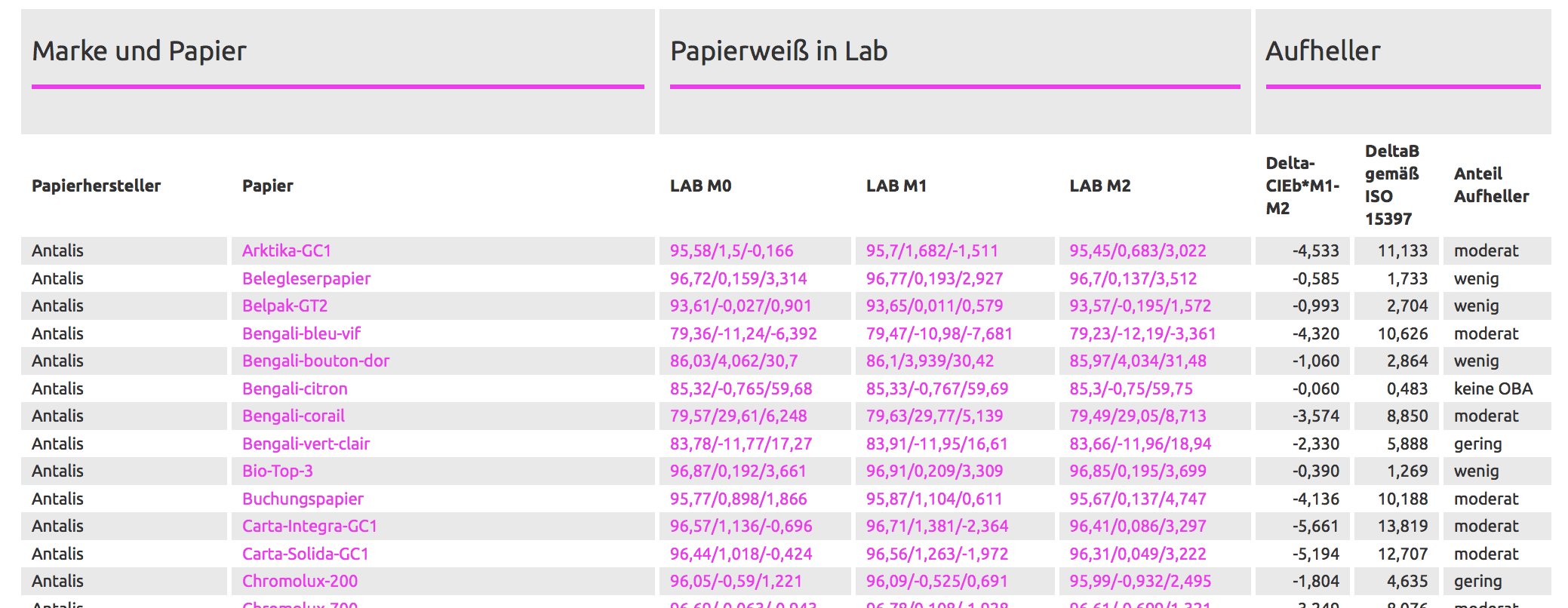Paper white of many paper manufacturers and online printers measured
We spectrally measured the paper white tone and the proportion of optical brighteners of over 1,000 papers of the most important paper manufacturers such as Berberich and Papier Union as well as online printing companies such as Flyeralarm and wir-machen-druck.de. Only a few paper manufacturers currently publish data on paper whiteness and the proportion of optical brighteners in their papers, but only technical indicators such as whiteness according to ISO 2470-2 or CIE ISO 11475. However, designers can hardly record paper whiteness with these values. In addition, it is not …

